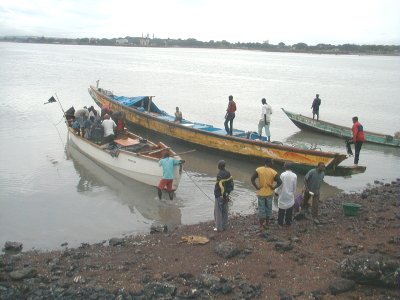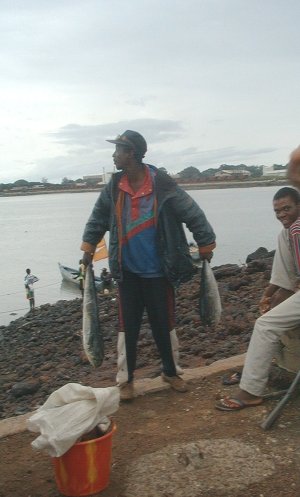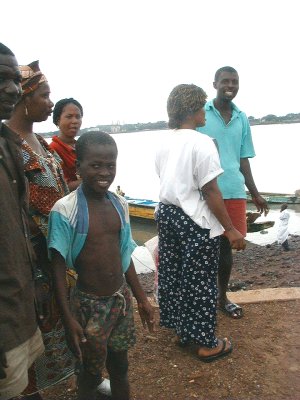MARE NOSTRUM - Space for Dialogue and Diversity
On the Road to an Aesthetic Formation -
Together with a globally distributed School Network
Project proposal by Carla Zickfeld - (project closed)

This project is being explored against the background of a long experience in the field of aesthetic formation and communication - specially the continued formation of young graduated artists by the means of interdisciplinary and international projects, in collaboration with well-known artists, art and culture scientists and has already received considerable recognition.
The project has different layers, which will enable people coming in from different horizons to create a stronger shared basis for cooperation. Inputs from current members and other interested people with artistic and scientific profiles will be welcomed and even indispensable, as the concept and activities get developed.
The concrete articulation will shape up in the interplay between conceptual work fed from scientific, artistic and local knowledge sources and the practical implementation in variable geometry.
Carla Zickfeld is taking the lead in developing the idea and concept further and ensure coordination of activities so that the artistic production is of high quality.
The broad concept and some avenues for implementation can be downloaded here.
For the interested reader, who is short of time, read on below:
Summary of the first phase

The project is also based on accumulated insights from the different branches of philosophy, the arts and observation of cultural diversity, which together form an intricate mosaic that inform the perceptions of the sea worlds around us.
Using approaches from the different branches of human enquiry and expression, the project seeks to build the foundations of more integrated perspectives considered essential for honing our ability to understand and collaborate. This is mediated through a journey of discovery of the other (in their many dimensions), of finding out how much humans have in common and how much we can do together to ensure that our planet is healthy and our children and future generations have sustainable and dignified living conditions.
The first layer consists of collecting memories in different places. These can be historical accounts, stories, episodes, images, audio-documentary and other expressions connecting the present to the past. Confronting the different multimedia narratives, we can draw comparisons and extract the connections that help us become more aware of other people's contexts. Engaging with these 'narratives' should also bring to the fore what connects us, through people's travels and migrations, trade, environment, disease (particularly transmissible diseases), culture, information and communication technologies and much more.
This is both an individual and social process. Such critical engagement lays the foundation for our ability to act together for a better future. It is indispensable, even if we realise that the connection between intellectual and emotive insight and action is long and complicated.
Summary of the second phase
 Aesthetic formation is proposed as one response to the dilemma that we have a lot of partial knowledge, be it in the sciences, the arts or other fields of human endeavour. We can not grasp how the pieces hang together and how to build up new syntheses. We are conscious about the challenge of shaping the education of the current and future generations in ways that enable a better synthesis and preparation for more sustainability than we have right now. Professionals in their respective fields realise that they themselves have a lot to learn in forming new syntheses and that teaching for sustainability is a journey together with the young people.
Aesthetic formation is proposed as one response to the dilemma that we have a lot of partial knowledge, be it in the sciences, the arts or other fields of human endeavour. We can not grasp how the pieces hang together and how to build up new syntheses. We are conscious about the challenge of shaping the education of the current and future generations in ways that enable a better synthesis and preparation for more sustainability than we have right now. Professionals in their respective fields realise that they themselves have a lot to learn in forming new syntheses and that teaching for sustainability is a journey together with the young people.
The new integrations may be helped by approaches to aesthetic formation which offer forms of collective consciousness about the challenges connecting the local to the global and vice versa. The sciences and the arts have different 'tools' at their disposal to study and pursue knowledge about the sea and wider world around us. No one alone will suffice, altogether they will enable new depth of understanding. Importantly, open new options for action will arise that are adapted to the specific context, but ideally follow a shared logic that takes sustainability, cultural diversity and critical engagement as foundations.
This phase involves several coordinated activities: (a) crossing wires between the sciences and the arts, while respecting the others' specificities and tools, (b) engaging with school teachers and young people with emphasis on developing content-related and pedagogical support in a network of solidarity, (c) developing and deploying the means of visual communication (e.g. through itinerant exhibitions, the home page of the Initiative, books etc.) to articulate the collective consciousness about seas. This could happen in different configurations to share this experience with others.
It is hoped that participants and onlookers will experience a kind of transformation in the way they see and understand the sea and world around themselves. It is hoped that they discover more of the sea's beauty and awesomeness and feel encouraged to redefine their relation with nature and with 'the other' they are meeting through the exhibitions and other forms of expression. The solidarity practiced in the network of scientists, artists and schools is intended to hone the ability to cooperate not only among those directly involved, but serve as encouragement for others to do likewise.









